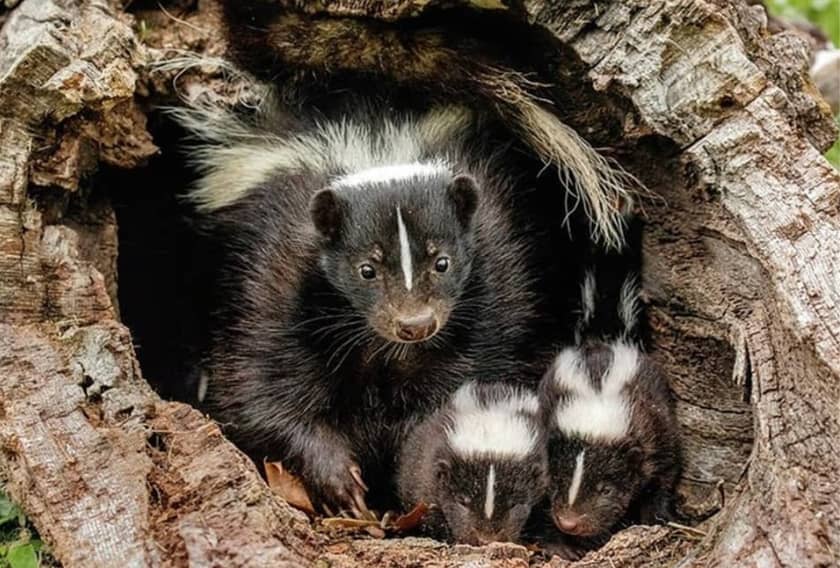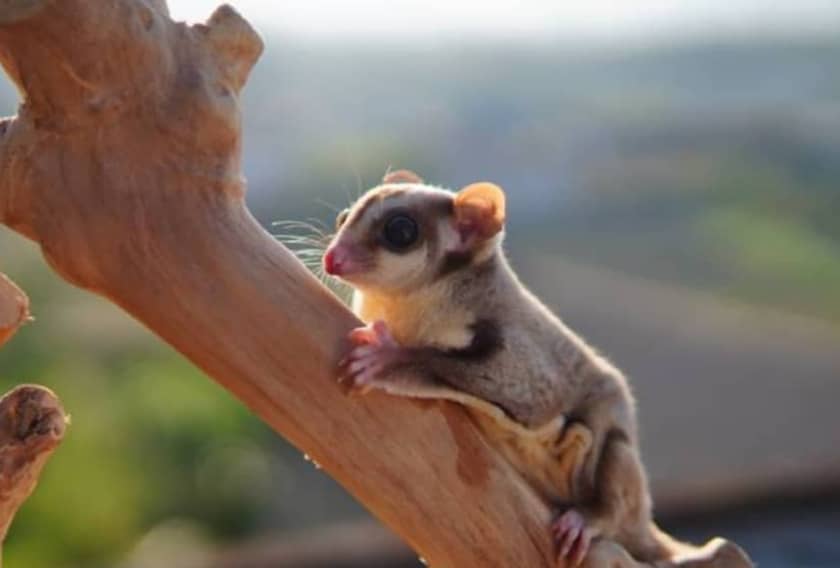The Japanese dwarf flying squirrel, also known as ‘Pteromys momonga’, is one of the most attractive and captivating rodents, with large eyes and a flattened tail. ‘Momonga’ means ‘flying squirrel’ in Japanese. They are native to the Japanese islands of Honshu and Kyushu. They inhabit the sub-alpine and boreal evergreen forests of Japan.

The reason to say them ‘Dwarf’ is because of their tiny size. They habitat in conifers such as pine and spruce trees, as they have lots of cavities between the trunk and branches.
The Japanese dwarf flying squirrels are arboreal animals, meaning they mostly live in trees and rarely spend much time on the ground. They have gray-brown hair on their backs and white hair on their bellies. They can glide amazingly with the help of their wing-like membrane called ‘patagia’.
Japanese Dwarf flying squirrels are members of the Sciuridae family, which includes small and medium-sized rodents such as tree squirrels, ground squirrels, and chipmunks. Still, they have a different lifestyle as compared to their other species, such as mice and rats. They prefer to eat much healthier vegan foods such as leaves, seeds, buds, cones, sprouts, berries, and nuts.
Size Information and Life Expectancy
Japanese dwarf flying squirrels are smaller than other flying squirrels; that’s why they are known as ‘Dwarf.’ Their body length is 14-20 centimeters (5.5-7.9 inches), and the size of the tail is 10-14 centimeters (3.9-5.5 inches). Their body weighs between 150 and 220 grams (5.3 and 7.8 ounces).
Japanese Dwarf Flying squirrels live 5–7 years in the wild. Whereas, they often live 10–12 years in captivity.
Male vs. Female
The physical appearance of flying squirrel males and females is similar. The females live with the young in nearby maternal nest places once they are born.
Mothers provide a lot of care and protection. Men are not allowed near the nests of the mothers and are not involved in raising the young.
Behavior and Temperament of the Japanese Dwarf Flying Squirrels
They are arboreal, mostly spending their time on trees. They spread their limbs and sail from one tree to another with the help of their membrane, patagia. Japanese Flying squirrels can glide over 100 meters at a time to reach other trees without making any sound. Even though they are called flying squirrels, they do not fly; they glide.
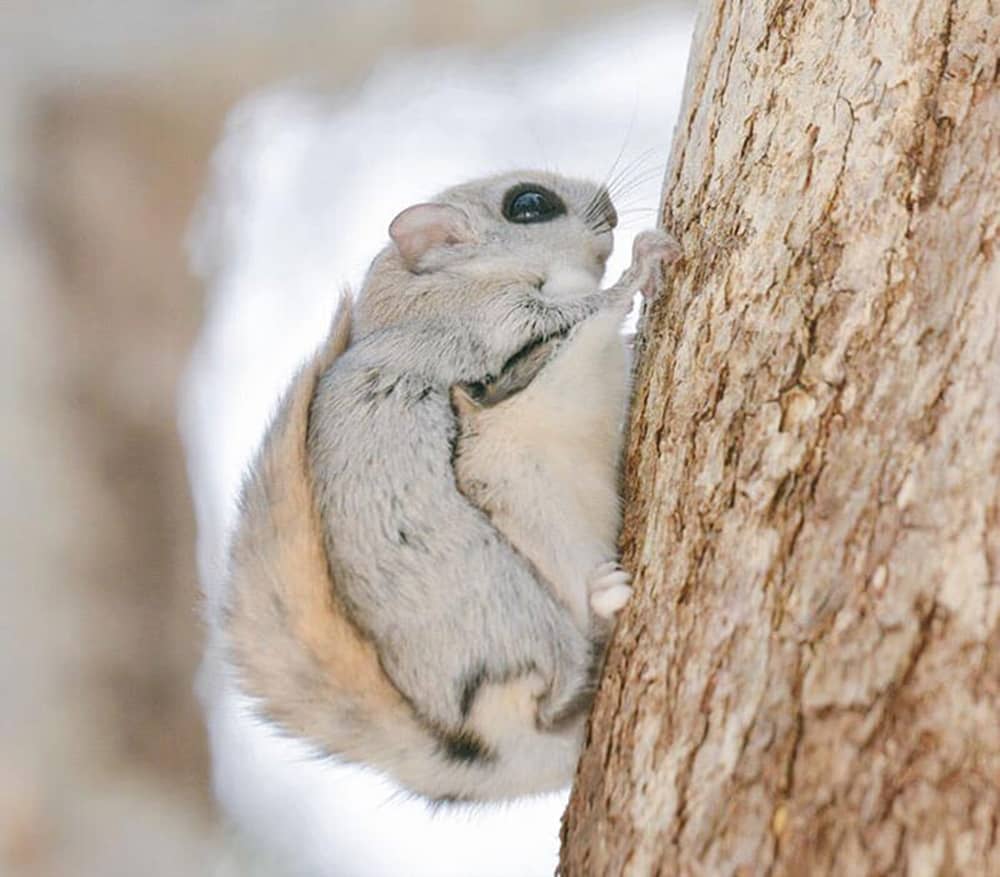
To keep themselves safe and sound, they camouflage so well that they blend with the tree bark and look just like a bump on a tree. When they land on a tree, their dense, bushy tail helps them to balance their body. They are very friendly and respond quickly if maintained properly.
Nests of Japanese Dwarf Flying Squirrels:
Their nests are known as ‘Dreys.’ They collect leaves and sticks, then wrap them with strands of grass. Also, line their nests with mosses and lichens.
They tend to stick together with small groups of the same gender sharing the same trees.
How to care for a Japanese Dwarf Flying Squirrel?
Japanese dwarf flying squirrels are tiny and unique rodents. They need special types of care, including a specific diet, enclosure, and exercise.
Diet:
Japanese Dwarf Flying Squirrels are herbivores (fruivore, granivore, liognivore). They consume much healthier vegan foods compared to other flying squirrels, such as leaves, seeds, buds, sprouts, nuts, and berries.
In the wild, Japanese Dwarf Flying Squirrels have a diet that is closely tied to their forested habitats, such as tree bark and buds, leaves, seeds, nuts, fruits, berries, and insects. During the winter, when food is scarce, they rely on the inner bark and buds of trees like spruce, pine, and fir.
If you’re caring for a Japanese dwarf flying squirrel in captivity, their natural diet is important to keep them happy and healthy. You can give fresh tree branches with leafy green vegetables. Branches should be free from pesticides and other chemicals. A mixture of nuts and seeds can be offered to your flying squirrels. Fresh fruits like apples, pears, and berries can be given in moderation as a treat. Insects and a commercial diet can also be offered to them to fulfill their requirements. Calcium and vitamin D supplements are crucial for bone health.
Habitat and Enclosure:
To create a perfect enclosure for your flying squirrel, it is important to understand their natural habitat to keep them healthy and happy. The enclosure should be escape-proof.
Japanese dwarf flying squirrels are natural climbers and gliders, so they need a tall enclosure rather than a wide enclosure. The minimum size of a cage should be 5 feet tall with horizontal space for them to glide there. To keep your flying squirrel physically active, you can set up some shelves, ladders, platforms, or branches inside the cage.
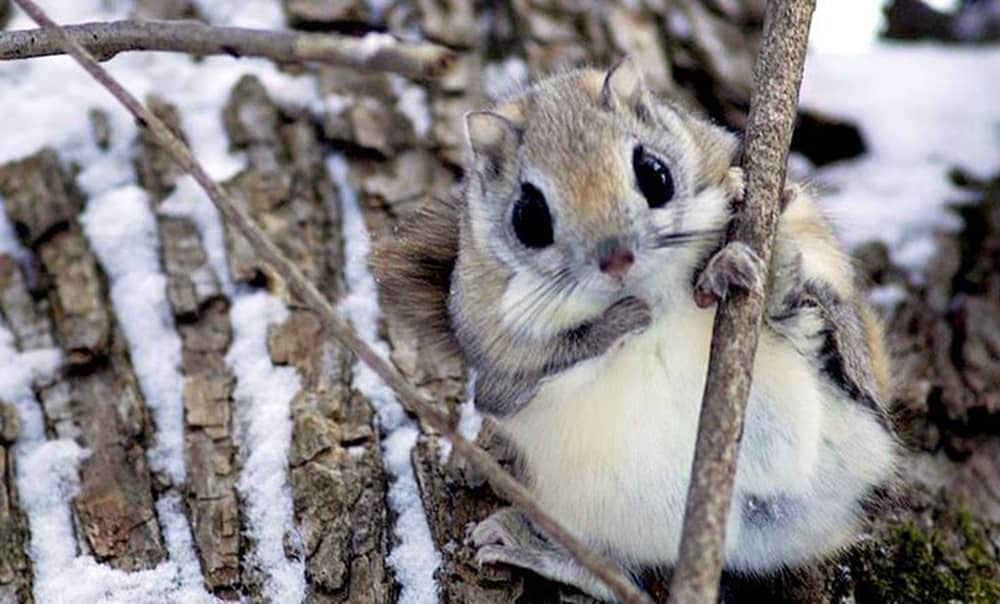 Moreover, ensure that the cage is made of non-toxic materials. You can also provide some nest boxes made of soft cotton fabrics where they can sleep peacefully.
Moreover, ensure that the cage is made of non-toxic materials. You can also provide some nest boxes made of soft cotton fabrics where they can sleep peacefully.
Specific Substrate Needs
These squirrels are nocturnal, so they don’t require bright lighting. You can maintain a natural day-night cycle with dim light during the day and darkness at night. It will support their natural rhythms. Also, arrange some natural branches from safe trees like oak, maple, or fruit trees. These should be sturdy enough to support climbing and chewing.
Exercise
Japanese dwarf flying squirrels are very active and enjoyable at night because of their nocturnal behavior, so you make sure to wake up your squirrels in the morning, take them out from the closure, and let them glide in the room itself.
You can also offer a variety of toys, such as wooden blocks, ropes, and tunnels, to keep them mentally stimulated, especially chew toys that help them wear down their constantly growing teeth. You can also scatter food in different areas of the enclosure to encourage natural foraging behavior, and hanging food in small baskets or placing it on different levels can make mealtime more engaging.
How to Handle a Japanese Dwarf Flying Squirrel?
If you are caring for a Japanese dwarf flying squirrel, it becomes your responsibility to perfectly take care of and handle them. First, it is important to understand their nocturnal nature. They are most active at night and sleep during the day. They are naturally shy and can be easily startled in new environments.
You must be patient; let your squirrel be comfortable with you first, then use your hand-feeding. You must wash your hands before handling your squirrel and handle them with both of your hands and close to the ground or soft surface, like a bed or sofa. Do not make unnecessary movements; because of that, your squirrel can feel uneasy. With time, they get comfortable in the environment.
Health Issues
Japanese dwarf flying squirrels are fragile animals; they require a specific diet and environment to survive. Their good health depends on the care they receive. They may have some common health issues, like Calcium Deficiency, Vitamin D Deficiency, and Obesity.
Calcium deficiency occurs due to a lack of calcium, which may cause MBD (metabolic bone disease). This leads to weakness and deformities in the bones of your squirrel. They can have difficulty moving in their surroundings. Your squirrel can struggle to absorb calcium without taking enough Vitamin D, which can cause bone issues. This generally occurs due to a lack of sunlight intake. Overfeeding or providing too many high-fat foods can lead to obesity in your squirrel.
Dental Issues
Their teeth have continually grown. They can have dental issues if their teeth are not worn down properly through chewing. Their teeth may get misaligned, and overgrown incisors may create difficulty in eating and can cause pain and injury to their mouth.
Parasites
Japanese dwarf flying squirrels may have external parasites like fleas, mites, and ticks that can cause skin irritation and severe diseases. Internal parasites like worms can lead to weight loss and diarrhea.
Veterinary Treatment
Japanese dwarf flying squirrels are not like other pets such as cats or dogs. They are unique and exotic animals; therefore, it is important to find a veterinarian who is experienced in treating these small rodents, like flying squirrels.
They require regular checkups with the vet to ensure their nutritionally balanced body. A veterinarian will check for signs of illness and recommend some routine tests, like a fecal test, to check for parasites. If your squirrel has difficulty breathing or sudden weight loss and injury, they require immediate attention from a veterinarian. A balanced and healthy diet and a clean and enriched environment can prevent many health issues.
Grooming
Japanese dwarf flying squirrels are self-groomers, but still, if you have one, it’s your responsibility to check their fur regularly for any signs of parasites and clean them. Also, you must brush them gently with a soft-bristle brush to remove loose hair and debris. Plus, as their nails also grow, cut them to a manageable length to prevent injury.
Ethics and Legality
The legality of owning a Japanese dwarf flying squirrel depends on where you live. In some localities, these types of exotic animals are protected by wildlife conservation laws or need some special permissions.
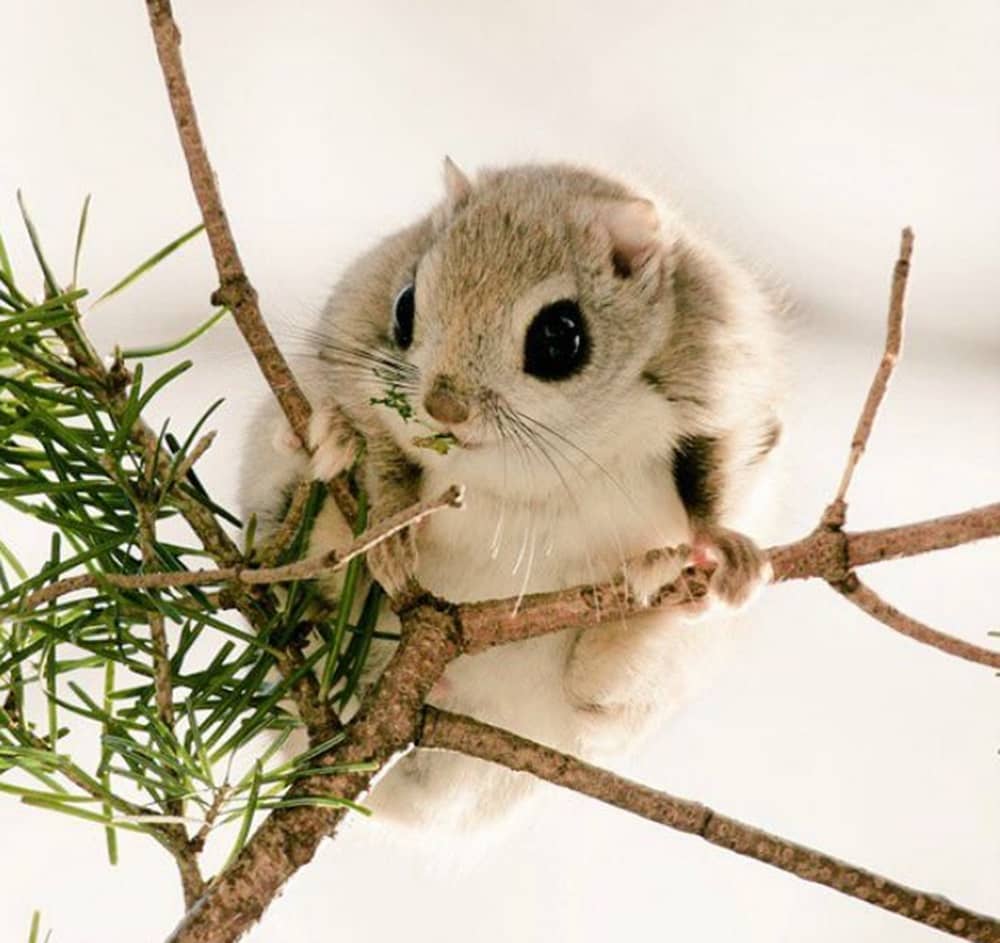
Legality
In many countries it is illegal to own a Japanese dwarf flying squirrel; even where their ownership is legal, there are strict regulations for their care and breeding. Therefore, it is foremost for you to get the necessary permissions and do research about your locality laws before owning a Japanese dwarf flying squirrel.
Ethics
Ethically, keeping a Japanese dwarf flying squirrel as a pet necessitates a strong commitment to satisfying their unique requirements. Japanese dwarf flying squirrels are wild animals with specific needs that are difficult to fulfill in captivity. They require large spaces to practice their gliding and climbing abilities.
They usually live in groups in the wild. So, keeping a single squirrel can cause stress and behavioral concerns, so owners should evaluate whether they can provide essential companionship or whether they should adopt many squirrels.
You shouldn’t own one of these squirrels if you already own other pets, as they can be killed or injured by other animals like dogs or cats.
Where to Buy?
The best way to get a Japanese dwarf flying squirrel is from a reputable breeder. Look for breeders that specialize in rare or small animals. They will also advise on the correct care and assist with any concerns that may develop.
Make sure you have a nearby exotic veterinarian who can treat your pet if an emergency occurs. The baby squirrels are more expensive than adults. The cost of a baby Japanese dwarf squirrel is around $1500 to $3000, but an adult can be owned for $800 to $2000.
Upkeep Cost
The Japanese dwarf flying squirrels require a suitable environment, healthy food, and veterinary care. Apart from an initial set cost of roughly $1500, you will be responsible for regular expenditures such as food, veterinarian visits, and insurance. It might cost between $50 and $150 each month.
Reproduction and Breeding
Japanese dwarf flying squirrels mate twice a year between May and July. The gestation period for Japanese Dwarf Flying Squirrels is about 40 to 50 days. During this time, the female should be provided with a quiet, comfortable nesting area.

Mothers carry them for about 4 weeks, and the average litter size is 5–6 baby squirrels. Mothers nurture them for about the first 6 weeks of their lives. The newborns are tiny, blind, and born without fur.
Related Species
The species related to the Japanese Dwarf Flying Squirrel are:
- The Southern Flying Squirrel (Glaucomys volans)
- Sugar Glider (Petaurus breviceps)
- Siberian Flying Squirrel (Pteromys Volans)
- Japanese Flying Squirrel (Ezo momongas)
Difference Between Pteromys Momongas and Ezo Momongas
Pteromys momongas are native to the Japanese islands of Honshu and Kyushu, while Ezo momongas, a subspecies of the Siberian flying squirrel, only live on the northern Japanese island of Hokkaido. The Pteromys momongas are generally smaller in size as compared to Ezo momongas, with a body length of about 20–26 cm (8–10 inches) and a tail length of 15–20 cm (6–8 inches).
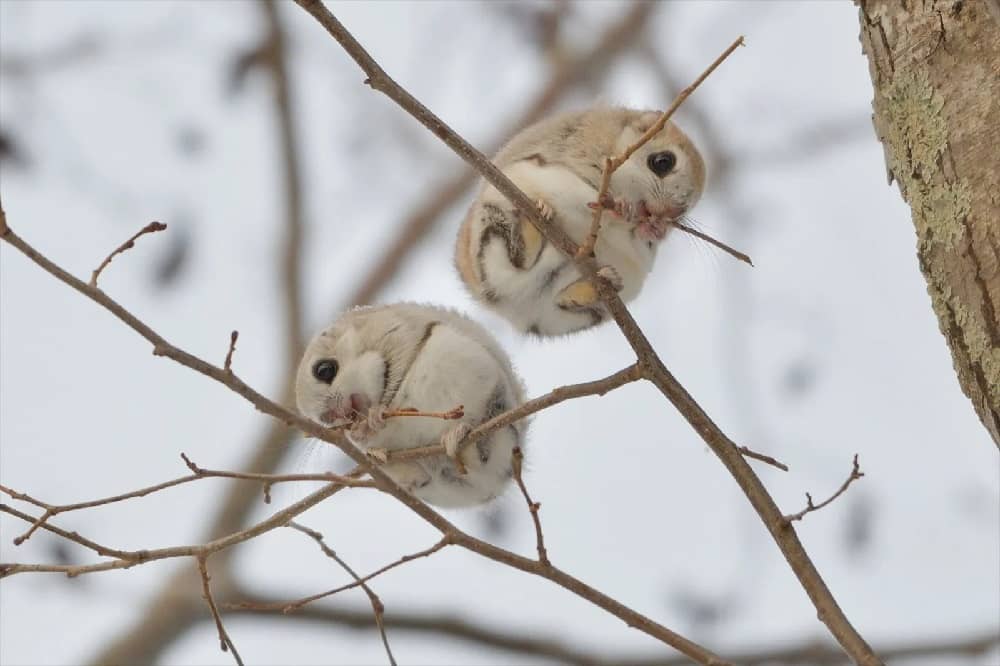
These species have different forest preferences. Ezo momongas prefers coniferous forests and mixed forests, whereas Pteromys momongas prefers deciduous and mixed forests with ample tree cover. You can also distinguish them by the color of their fur. Pteromy momongas have gray-brown hair on their backs with white hair on their bellies, whereas Ezo momongas are coated with gray fur and have a blackish belly.
Interesting Facts About a Japanese Dwarf Flying Squirrel
- Japanese Dwarf flying squirrels are fluorescent; they glow bright pink under the UV light while flying.
- Japanese dwarf flying squirrels have a peculiar technique of chewing their food; they often hang upside down on a branch or twig.
- The baby squirrels are born without fur and with closed eyes. Their internal organs are visible through the skin.
- They communicate using various vocalizations, including high-pitched sounds and chirps.
- These squirrels leave dry droppings that have no smell.
- Japanese dwarf flying squirrels breed in the spring and summer months.
- When they land on a tree, their bushy tail helps them to balance their body like an air brake.
- Japanese dwarf flying squirrels are herbivores and eat only vegan food.
- They are nocturnal, mainly active at night, and spend most of the daytime in nests.
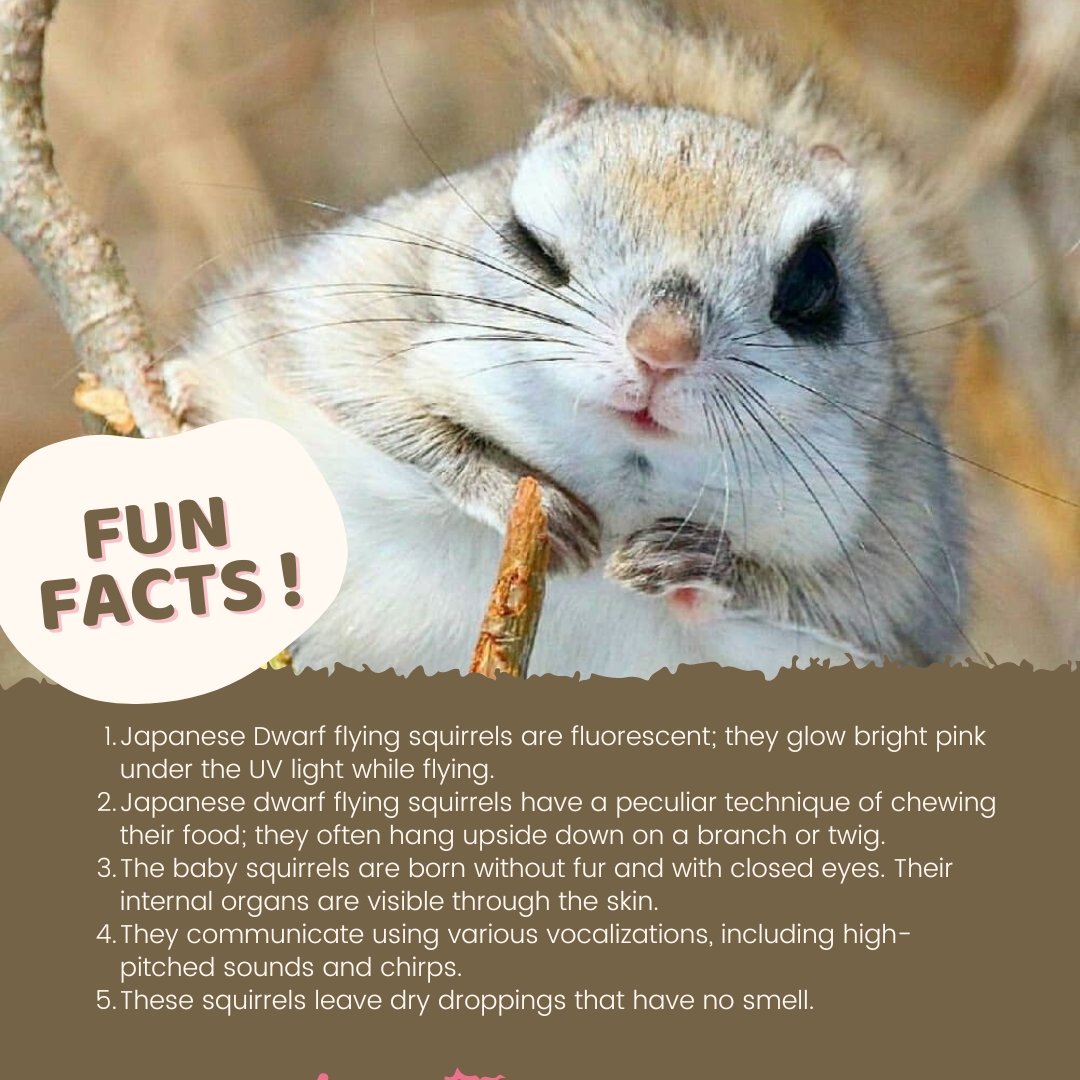
Frequently Asked Questions
Question 1: Are Japanese Dwarf Flying Squirrels social animals?
Answer: Although they are usually solitary, they might socialize with others when mating or caring for their young.
Question 2: What kind of habitat do Japanese dwarf flying squirrels prefer?
Answer: They prefer dense forests and woodlands in Japan, where they can find ample food and suitable trees for gliding.
Question 3: Are Japanese dwarf flying squirrels endangered?
Answer: Although deforestation and habitat loss may pose a threat to their environment, they are not officially listed as endangered. The goal of conservation initiatives is to protect their original forest environments.
Conclusion
In conclusion, the Japanese Dwarf Flying Squirrel (Pteromys momonga) is an amazing animal that, due to its small size, skill at gliding, and nocturnal activities, emphasizes the wonders of nature. These animals are essential to their forest ecosystems because of their distinct gliding skills, complex mating habits, and tailored nutrition. Efforts must be made to protect their forest homes from deforestation and habitat degradation, which are important for their future generations.

